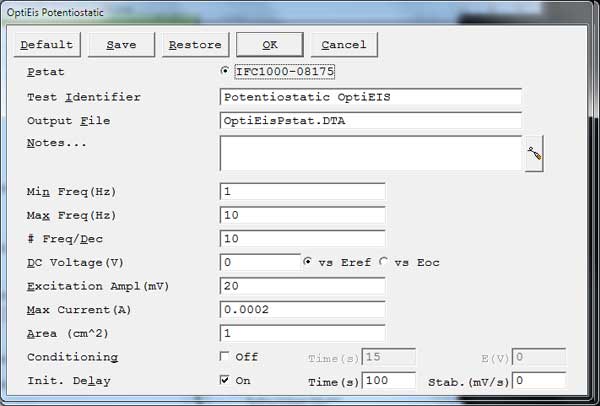Potentiostatic OptiEIS Setup Parameters
The following parameters are associated with the Potentiostatic OptiEIS experiment.

Min Freq (Hz)
- The Min Freq parameter defines the lowest frequency component of the scan. Enter the frequency in Hertz. See the limitations in Max Freq below.
Max Freq (Hz)
- Max Freq defines the highest frequency component of the scan. By mathematical rule, this frequency cannot be greater than Min Freq × 4096, and must be less than 9375 Hz. Enter the frequency in Hertz.
# Freq/Dec
- A rough definition of the density of data in the final impedance spectrum. Because of the mathematics involved in OptiEIS, the minimum allowed value is 10 and the maximum value is 22. The lowest decade of frequency is fixed at nine frequencies because of mathematical constraints.
DC Voltage (V)
- The constant potential applied to the cell throughout the multisine scan. The multisine signal is summed with the DC Voltage.
Excitation Ampl (mV)
- The base amplitude value used for calculation of the multisine AC signal. Individual sine waves within the multisine signal can have different amplitudes, but the final signal cannot exceed the specified value.
Max Current
- Sets the initial current-measurement range of the potentiostat. If you use a value higher than allowed, the instrument measures additional noise because the signal-to-noise ratio cannot be optimized. It is best to start with a lower value, for the instrument can detect an overload and switch to the next range automatically to improve the signal-to-noise ratio.

Comments are closed.